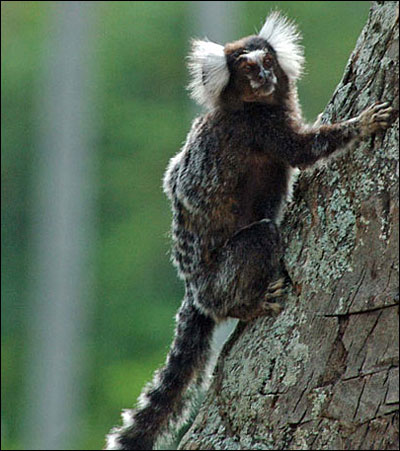
Biodiversity Loss: Crisis in Sustainability
Our runaway population growth is clearly outstripping the earth’s non-renewable resources, her biological fundaments and her ability to revive herself. Those who have grown up with an orientation to spiritual ecology and animal rights would differ substantially from those in the scientific community who continue to call birds and mammals and other unique creatures “resources.” John Muir was horrified at such misuse of the language. A tree, he argued, cannot hide; it cannot run. Any fool can cut it down. It takes a tender heart, a wise soul to leave it be. Continue reading
Posted in Uncategorized by admin

Hotspots: Biodiverse Areas Under Threat
The filming of “Hotspots” throughout New Zealand encompassed over one hundred interviews with key scientists and others working to save endangered species and habitat, on Stewart Island/Rakiura, Ulva Island and Codfish Island (Whenua Ho), in Fiordland National Park, with the Department of Conservation in Te Anau and Burwood Bush, at Pukaha Mount Bruce National Wildlife Sanctuary, at the Grand and Otago Skink site at Macraes Flat in Central Otago, at Karori Wildlife Sanctuary in the heart of Wellington, at the Westshore Wildlife Reserve in Napier, at the Maungatautari Ecological Island Trust reserve, in the city parks of Auckland, and at Tiritiri Matangi Open Scientific Reserve, as well as dozens of other reserves and extraordinary locations throughout the country. Continue reading
Posted in Uncategorized by admin

Hot Spots Capital of the World: Peru
The Peruvian section of the DSF film “Hotspots” was motivated by the recognition that the Tropical Andes represent, in Dr. Mittermeier’s words, “the global epicenter of biodiversity because it has far more species than any other hotspot on the planet: 1,728 species of birds of which nearly 600 are endemic . . . 1,155 amphibian species thus far recorded . . . Reptile diversity, more than 600 species, mammal diversity nearly 600 species. So you’re getting an enormous concentration of animal life in the tropical Andes and plants are just off the charts. You’re looking at 30 to 35 thousand plant species in this hotspot, which is about one and a half million square kilometers . . . Continue reading
Posted in Uncategorized by admin

Biodiversity in Ecosystems
DSF’s work in Yemen has been especially rewarding. Yemen as a whole presents a sobering profile. Her 21 million people are destined to exceed 71 million by 2050 at current trends. 74% of the nation is rural, male life expectancy a mere 59, females 63, with a daily income average of US$2.27.
It is not surprising, then, that there is widespread trafficking in wildlife and rapid loss of habitat. At least twenty species are known to be Threatened and Endangered, and the Arabian leopard in Yemen all but lost. Continue reading
Posted in Uncategorized by admin

Biodiversity Importance
Within the biological hotspot known as the “Western Ghats and Sri Lanka,” exists one particular region of enormous biological endemism, much of it as yet unanalyzed in full, spanning parts of Western Tamil Nadu and Eastern Kerala. While nearly 15% of the overall hotspot enjoys some form of designated protected area (*1), there remains much to understand, and more to preserve in these globally unique montane rainforests and among the indigenous people who live there — particularly the Todas, one of the last largely vegetarian tribes anywhere in existence. Continue reading
Posted in Uncategorized by admin
Conservation Biology & Animal Rights: One Language
Conservationists and animal rights aficionados should, but do not always speak, the same language. Their focus is the same, but gulfs and debates continue to sunder what should be a unified concern for all life forms, wild or semi-wild. The genetics and phenotypes allegedly defining wild versus domestic are far less relevant than the basic ethical dispositions we should all be thinking about… Continue reading
Posted in Uncategorized by admin
Biological Miracles and Ecological Faith in the Future — Part 3
Preserving Sustainable Resources: Dancing Star Foundation Missions
Those at Dancing Star Foundation believe that all life is precious; that animal rights is most magnificently displayed in two specific arenas: among individuals, and at levels of vast habitat protection, such as at the Greater Yellowstone Ecosystem (over 20 million acres) or the largest single… Continue reading
Posted in Uncategorized by admin
Biological Miracles and Ecological Faith in the Future — Part 2
The Values of Conservation
Jean-Paul Sartre in the Amazon
Sartre’s stunning novel questioned our ability to make meaningful contact with nature, particularly the bark of a tree wherein is writ large the story of cavity nesting birds, not to mention all those other vertebrates and invertebrates that continue to be discovered at… Continue reading
Posted in Uncategorized by admin
Biological Miracles and Ecological Faith in the Future — Part 1
Is Conservation Achieving It’s Goals?
To glean but one example of the prolific nature of biodiversity, consider the ongoing data base from Ecuador’s Yasuni National Park, probably the single most biologically elegant fortress of interdependent life forms as yet discovered, with nearly six hundred bird species, 150 amphibian populations, “more tree species, 655″… Continue reading
Posted in Uncategorized by admin
Disasters and Solutions — Part 2
Biodiversity Successes and Failures
Wall Street burns, wealth accumulation vanishes overnight, but the real wealth — as every villager dependent on safe drinking water and healthy soils can attest to — is lodged in the integrity of ecosystems that we will either come to understand and make peace with, or vanish… Continue reading
Posted in Uncategorized by admin





